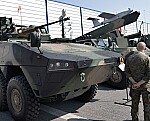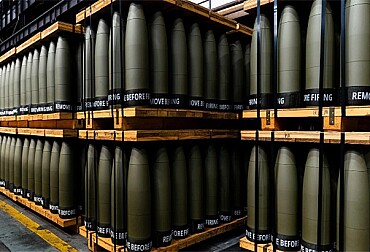Norway's historic defense plan: Doubling military spending with a focus on frigates and subs
Norway is on the brink of a significant shift in its defense strategy, as announced by Prime Minister Jonas Gahr Støre. The country plans to double its military spending, adding 600 billion NOK ($56 billion) over the next 12 years. This move is not just a numeric increase but a strategic enhancement, primarily focusing on strengthening maritime capabilities in the face of Russian naval power in the High North and Atlantic Ocean.

A Substantial Financial Commitment
The new defense plan is historic, marking a considerable increase in the nation's defense budget to NOK 1.6 trillion ($150 billion) by 2036. This essentially doubles the current budget in real terms, a move that signifies Norway's commitment to bolstering its defense infrastructure. While this plan awaits parliamentary approval, the intent is clear: Norway is serious about enhancing its military capabilities.
Maritime Modernization at the Forefront
Norway's Navy is set to receive a significant portion of this budget, with plans to modernize its fleet extensively. The acquisition includes at least five new frigates and a similar number of submarines, signaling a robust response to maritime security challenges. This includes an additional Type 212CD submarine, augmenting four others already ordered from the German-Norwegian collaboration with ThyssenKrupp Marine Systems.
Despite these ambitious plans, there's a note of caution. The proposed number of vessels is still one short of the six recommended by Gen. Eirik Kristoffersen, Norway's Chief of Defence. However, the plan aligns with the broader defense objectives, including enhancing air defense capabilities and long-range precision firepower.
Strategic Implications and Global Positioning
The defense plan is not just about numbers and equipment; it's a strategic response to the evolving global security landscape. Norway's proximity to Russia's formidable nuclear submarine fleet in the High North and the North Atlantic necessitates a vigilant and robust naval presence. Additionally, the global shifts marked by China's rise and Russia's assertive posture necessitate a reevaluation of defense strategies, influencing Norway's decision-making process.
The inclusion of Sweden and Finland in NATO is viewed positively, strengthening regional security and offering a united front against potential threats. This expanded alliance, coupled with Norway's enhanced capabilities, forms a strategic bulwark in the region.
Expanding Beyond the Navy
The defense plan is comprehensive, extending beyond naval upgrades. The introduction of a ground-based air defense system (GBAD), the expansion of the army, and enhanced Home Guard forces underscore Norway's holistic approach to defense. The acquisition of long-range air defense systems and the doubling of NASAMS units highlight the emphasis on protecting Norwegian skies.
In anticipation of future challenges, Norway is also investing in technology, with plans to expand satellite and drone capabilities. This includes acquiring long-range drones for monitoring critical maritime zones, especially in the High North, ensuring a vigilant eye over strategic areas.
Conclusion
Norway's defense plan is a testament to the nation's commitment to securing its borders and maintaining a strong stance in an unpredictable global landscape. By doubling its military spending and focusing on strategic areas such as maritime capabilities, Norway is not just preparing for today's challenges but is setting a foundation for a secure future. The world is watching as Norway takes these bold steps, reshaping its military posture and asserting its position on the global stage.








